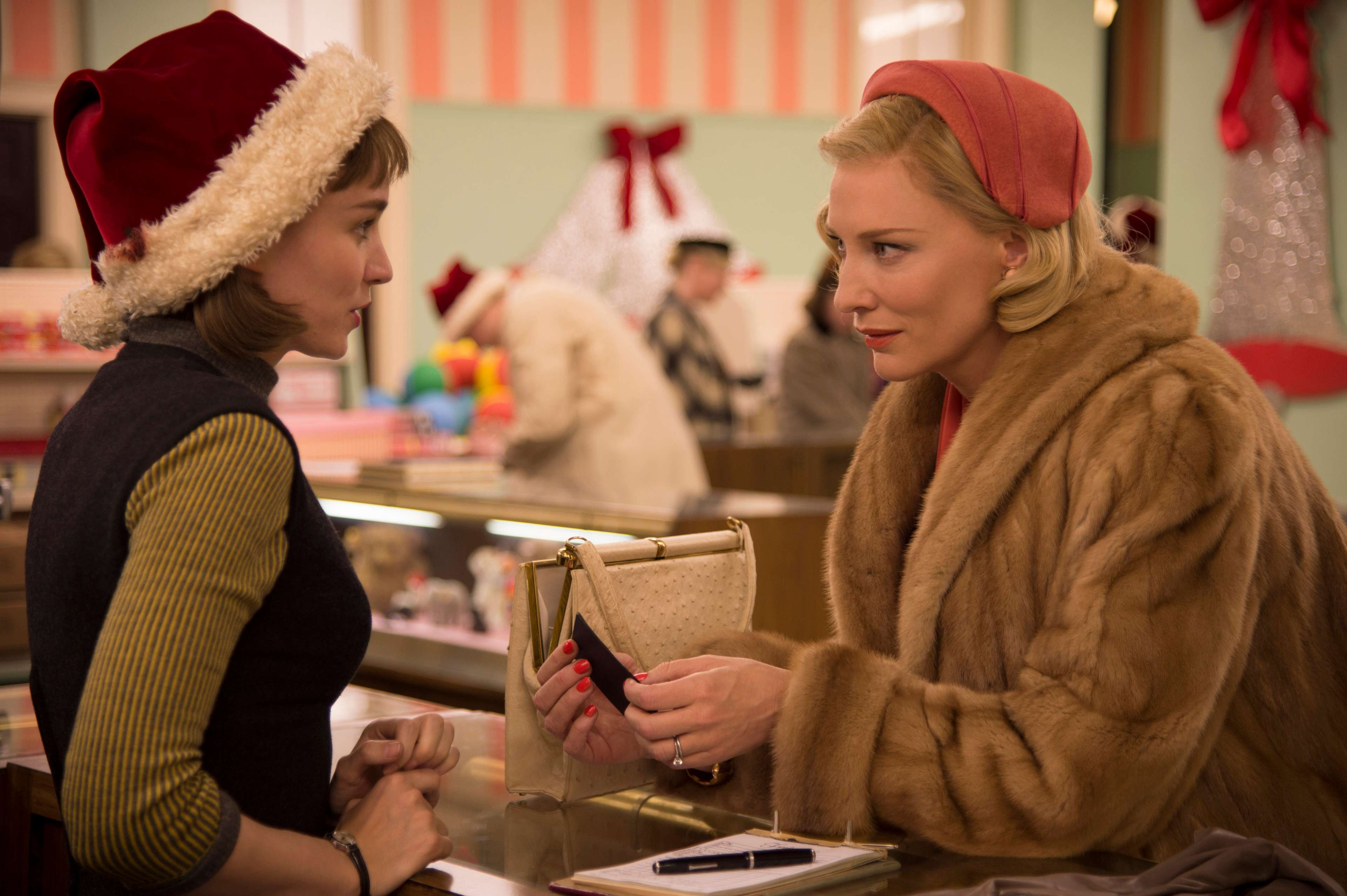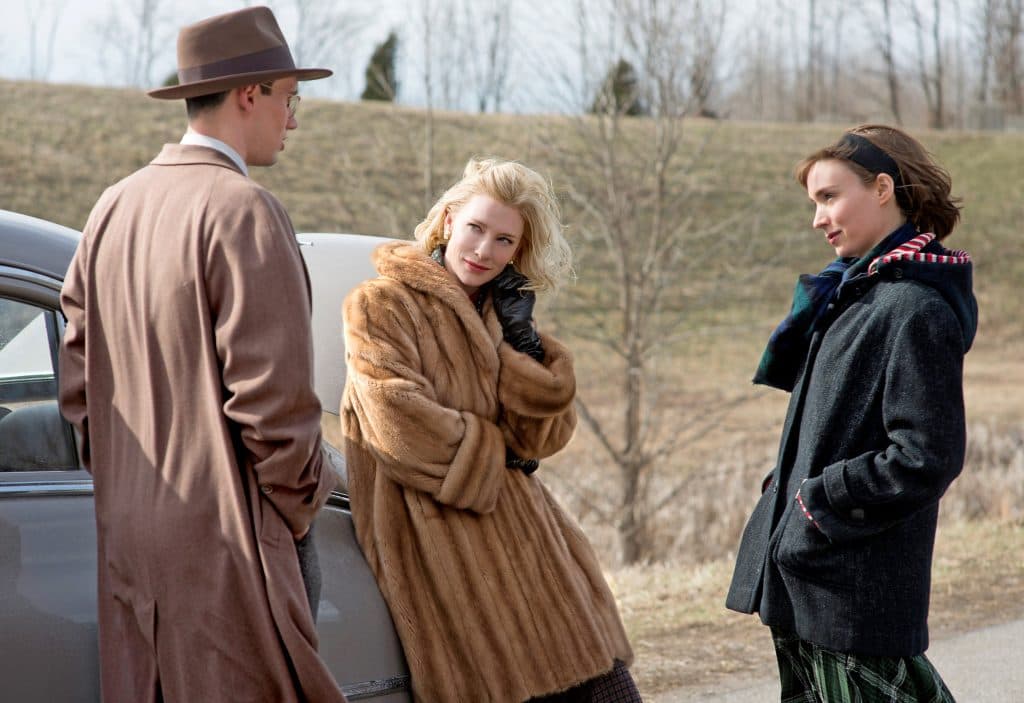The only Christmas Carol you should be watching this year
 StudioCanal UK
StudioCanal UKWe hear you – the answer to this statement should be The Muppets Christmas Carol, and for many years, it has been. However, the legacy of Todd Haynes’ 2015 flick Carol presents a perception of the festive season that seduces us with hope.
The Christmas period is hardly a time that has a shortage of movies to hand, keeping any festive indulger glued to their sofa for the ‘No Man’s Land’ period between Christmas Eve and New Year’s Day. In recent years, a relatively new title has proved itself worthy of placement in the annual rotation – Todd Haynes’ 2015 flick, Carol. Starring Cate Blanchett and Rooney Mara, the movie follows Therese Belivet, who works at a department store in Manhattan where she encounters the alluring Carol.
Taking place during the Christmas period, Carol is a journey of self-discovery that many women, LGBTQIA+ people, and general cinephiles have been longing for for eons. It’s a seductive, intricately wrapped present that doesn’t need to cajole viewers into tearing straight in, instead inviting its many layers to be examined longingly. It’s a simple story well-crafted – and after all, isn’t that the hallmark of an impeccable Christmas movie?
For some, calling Carol a festive film will be a stretch too far. Like Die Hard, the Christmas period only really provides context rather than heavily informing the plot outright. Despite this, Carol arguably encompasses the spirit of the holidays, even without Therese artfully placed behind a shop counter while wearing a Santa hat. Undeniable love, togetherness, and bridging the gap against all odds are exactly what all loved ones become shrouded in while time stands still – a feeling that expertly sums up Therese and Carol’s romance.
Carol is queer Christmas done right
On the face of it, there shouldn’t be anything particularly exceptional about Carol. Adapted from the Patricia Highsmith novel The Price of Salt, it’s simply the meeting of two minds from different walks of life – Therese, a shop worker who dreams of being a photographer, and Carol, a housewife with a life she keeps close to her chest. However, as the pair’s tale unfolds, its beauty lies in the power and passion that fuels their connection.
The fact that Carol marked one of the first descents into exploring queerness at Christmas only adds to this. Long before movies such as Happiest Season and Single All the Way came along, there was a distinct gap in the cinematic landscape. Representation had undoubtedly come a long way since the first distinct lesbian couple on Hollywood screens – Corky (Gina Gershon) and Violet (Jennifer Tilly) in the Wachowski’s 1996 film Bound. It arguably wasn’t until Carol that the lesbians could have it all: A love story, at Christmas, that was largely free of stereotypes yet still shone a light on issues routinely faced.
In their separate ways, both Carol and Therese are deliciously tortured souls. While Therese battles a sense of foreboding emptiness over the meaning of life, purpose, and a faux and hollow relationship, Carol is risking it all to break free from the shackles of conformity, intent on having her cake in life as well as eating it. Carol’s natural underbelly of fire and ferocity perfectly pairs with Therese’s contemplative and often subdued nature, each bringing out a quality in the other that ends up being transformational.
A simple premise defies simple perceptions
 StudioCanal UK
StudioCanal UKWhat director Todd Haynes has managed to do with Carol is deliver nothing short of a Christmas masterpiece. Viewers never have to work too hard to understand and unpack the nuances of the narrative, being swept away by Carol and Therese’s unraveling sense of desire. Visuals, soundtrack, and performance come together to create a near two-hour spectacle that’s truly spellbinding, itself lost in the art of embellishing a simple concept. It might be simplistic in premise, yet it is anything but in perspective.
The festive season is never the making of Carol, but it does a lot to encourage the storyline. With social norms, husbands, and boyfriends breathing down their backs, Christmas doesn’t only allow the pair to properly get to know each other; it provides them a safe opportunity to actually experience joy. Bubble-wrapped in the privacy of timelessness between Christmas Eve and New Year’s Day, Carol and Therese become the sole entity to exist in each other’s world, fully giving over to toy train sets, aimless road trips, and candid photographs by a Christmas tree stall. In fact, it’s Christmas itself that gives the pair the gift of each other.
If nothing else, what Carol offers – when not many other sapphic films do – is a sense of hope. Its ambiguous yet uplifting end scene finally projects the idea that two women can live happily ever after, dodging the tropes of death, circumstance, and male interference. The ultimate present a movie lover can give themselves this festive season is a chance to let Carol and Therese do the emotional heavy lifting, offering a heartfelt and meaningful resolution in turn.
For more Dexerto TV & Movies coverage, click here.



